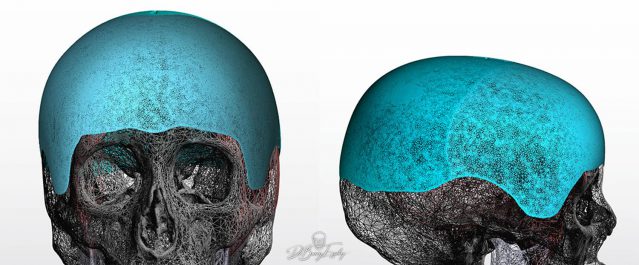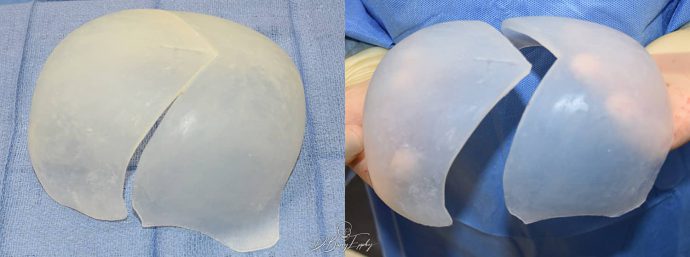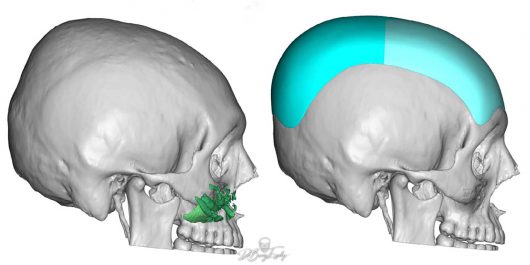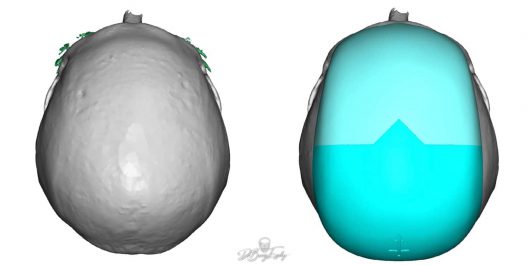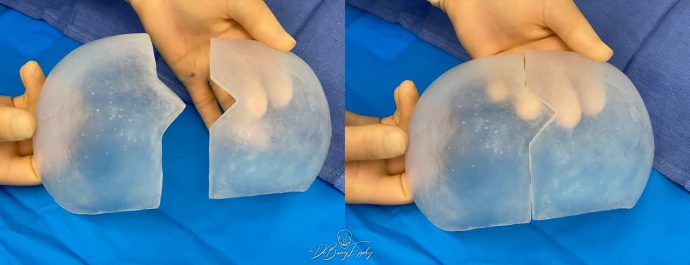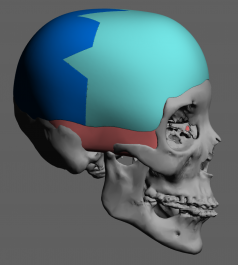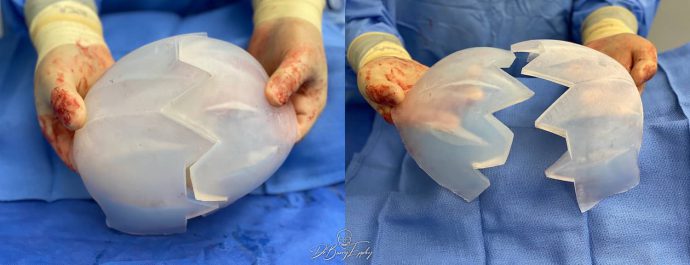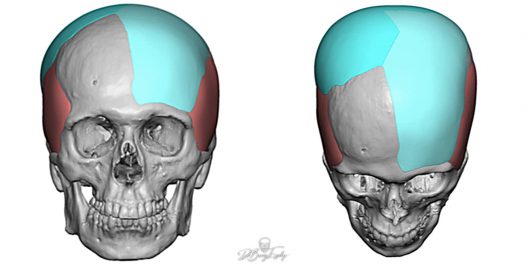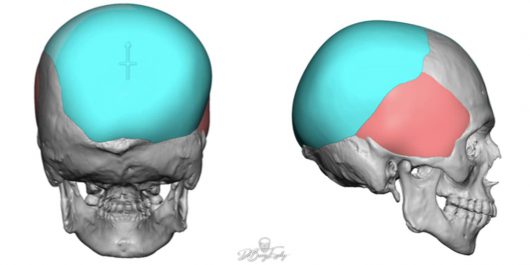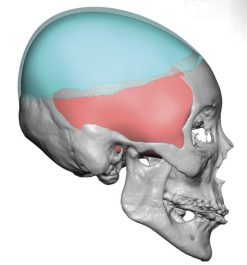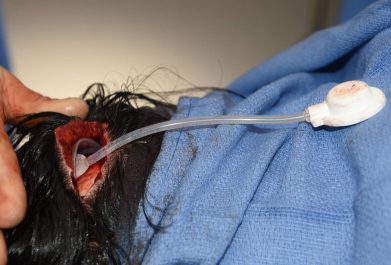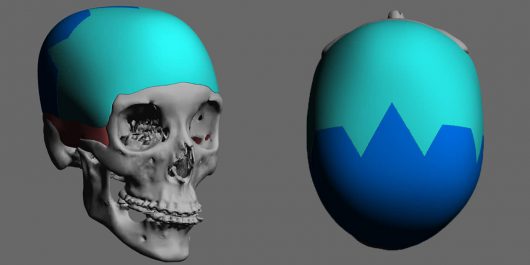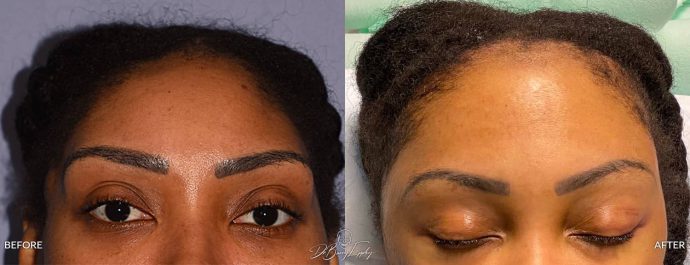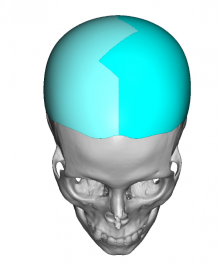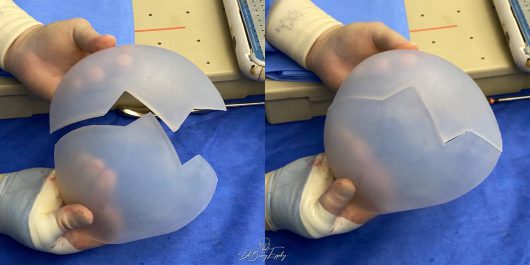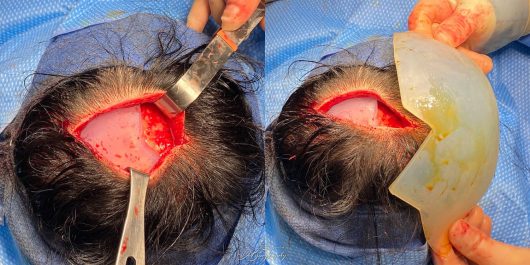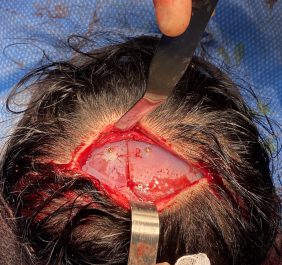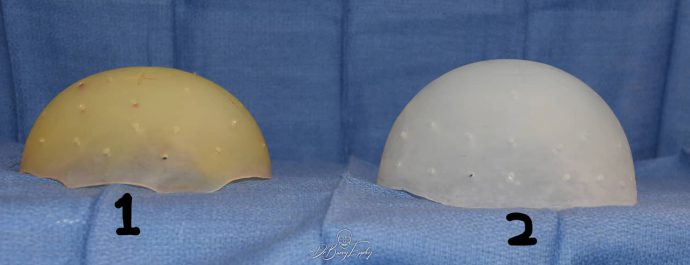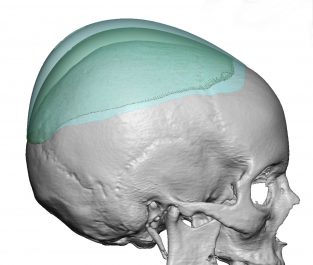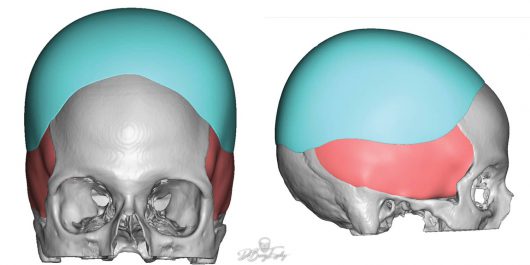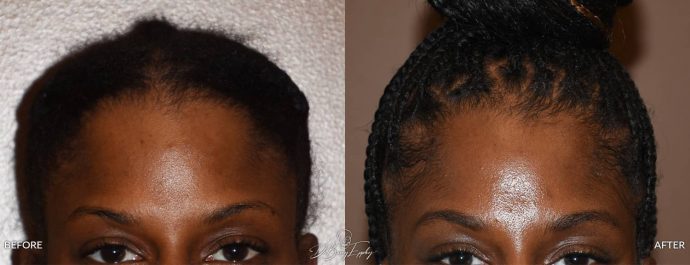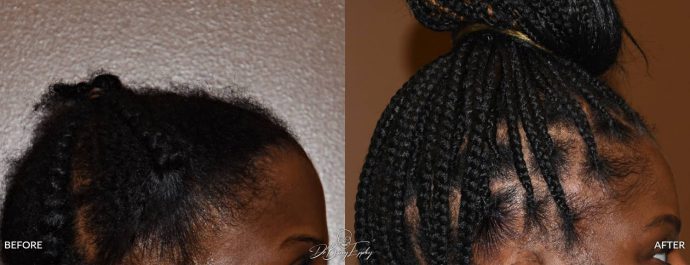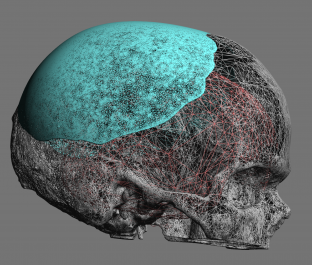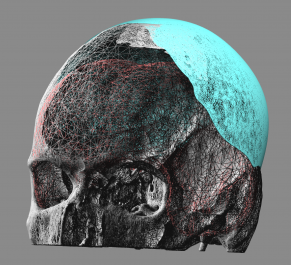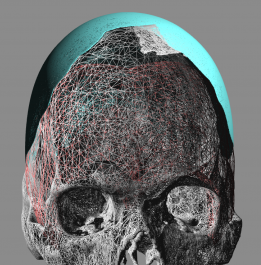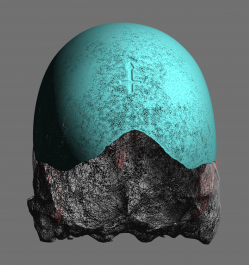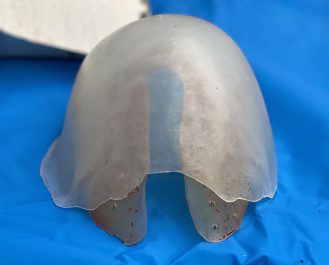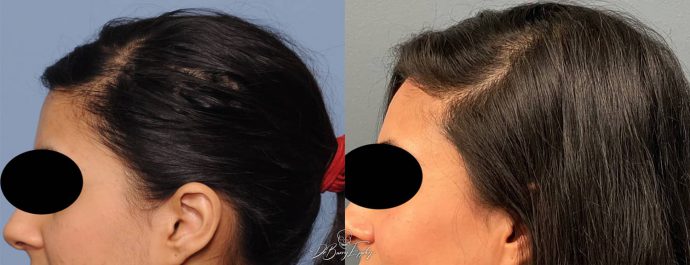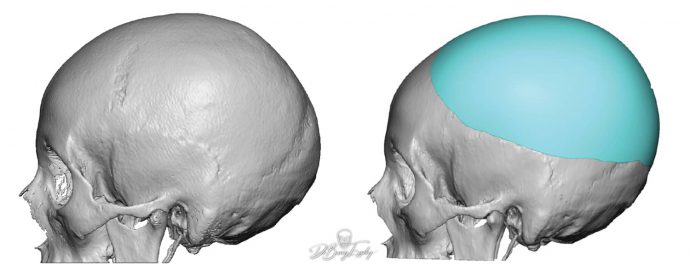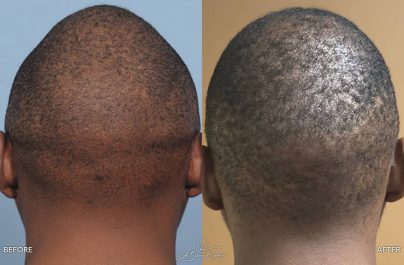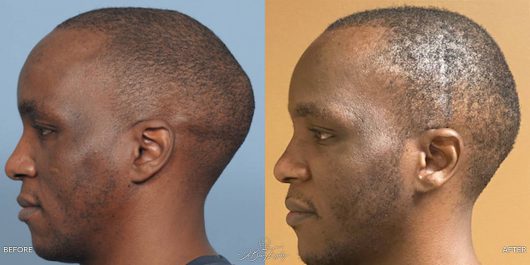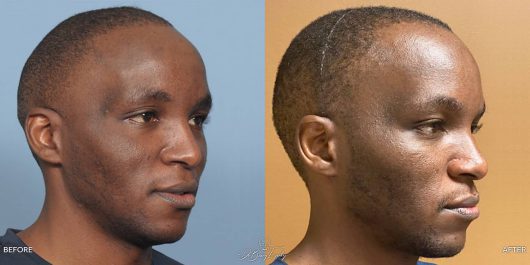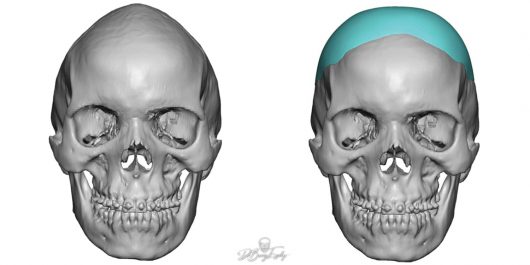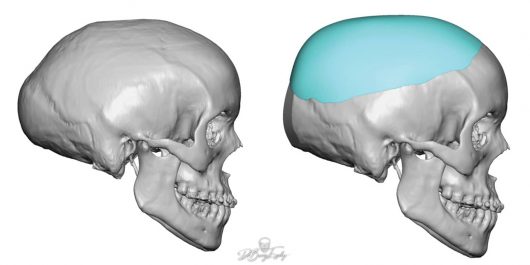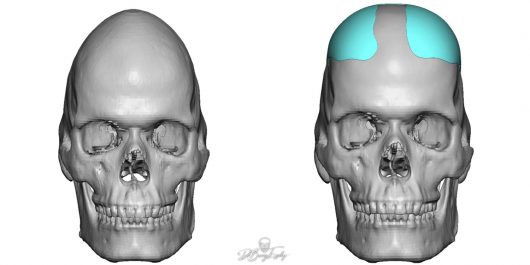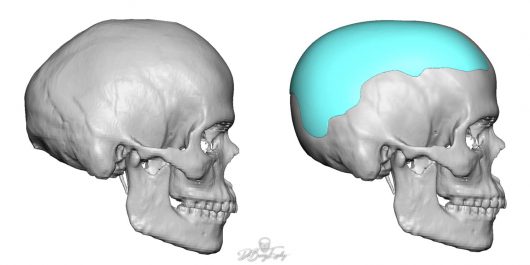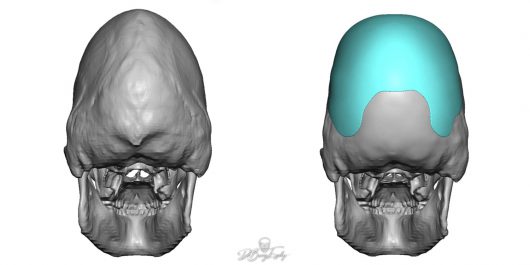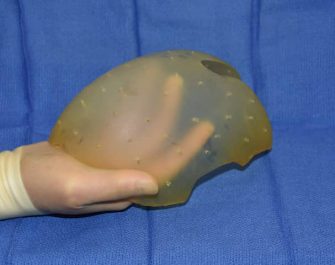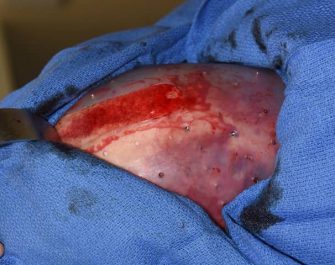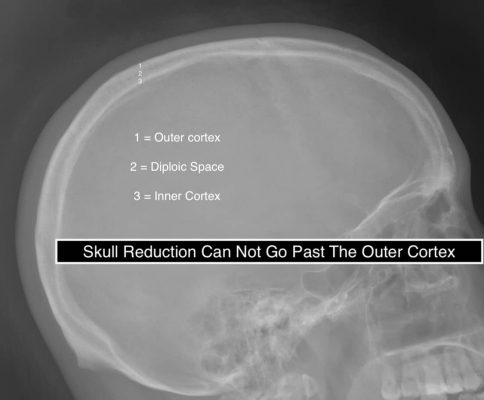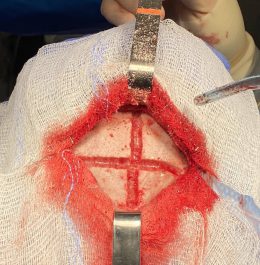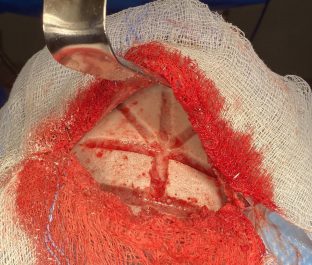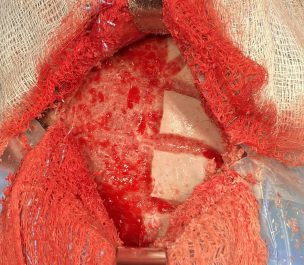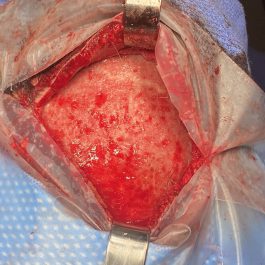Skull Augmentation & Reduction
On this Page
Small Head & Large Skull Augmentations
Increasing the size of the head that involves more than three skull surface areas can only be effectively done with a custom skull implant design. Such custom implants provide the most assured skull augmentation effect because the work of creating the dimensions of the skull augmentation needed, in both surface area coverage and thicknesses, is done before the surgery. This also ensures the smoothest augmentation surface with thin and non-visible/nonpalpable implant edgess to the surrounding skull surfaces. This also allows for a smaller incisional length to place it.
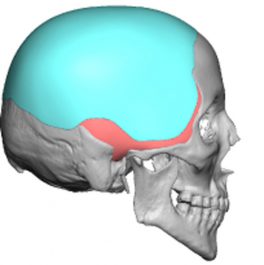
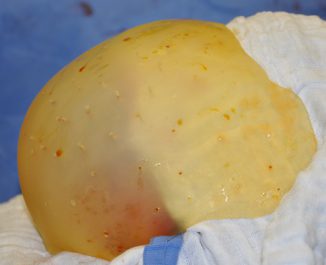
When the size of the skull implant covers almost or all of the entire skull surface, it is neither possible to manufacture or surgically placed such a large implant as a single piece. Thus such large custom skull implants are designed and placed as a split or two-piece type implant.
The other two-piece custom skull implant technique is the stacked or overlay method. This is done when uncertainty exists about whether the volume of the skull implant designed can be successfully implanted. (adequate scalp closure over it) As one gets over a 150cc implant volume the stretch of the scalp in most people becomes the limiting factor. Thus the implant can be designed in two pieces with the base volume being the inner piece (the implant volume one is certain will fit) and the overlay (second piece) which fits on top of the base implant. If the scalp stretch permits the overlay piece can be added. If not then one does not have to have the problem of a large skull implant that does not fit which then has to be hand-carved down in size.
Another method of large skull augmentation is when two areas of significant area are needed and two implants are designed to treat it. A good example of the two simultaneous implant placements is in the brachycephalic skull shape. To lengthen and reshape this ‘short’ skull shape the combination of custom back of the head and forehead implants are used.
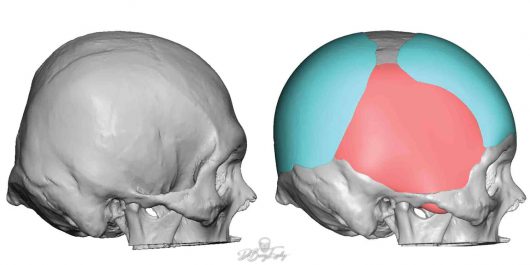
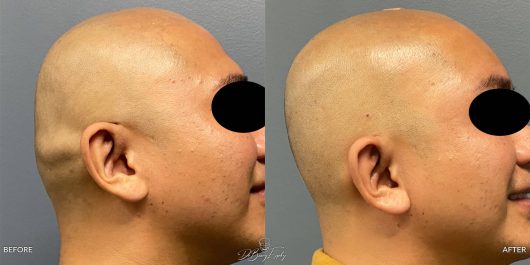
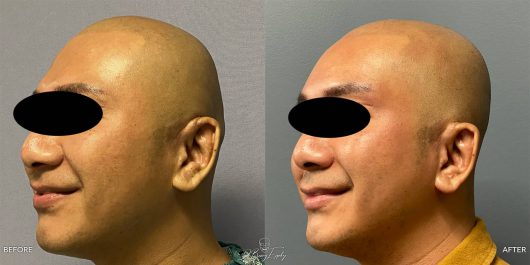
The key question in any large skull augmentation method, regardless of the implant material used, is whether there is enough scalp tissue to close over it. While the scalp will stretch when elevated from the bone, there are limits to its elasticity. One never wants to ‘discover’ during surgery after the skull implant is placed that the scalp cannot be brought together over it or the incisional closure is extremely tight. While there is no absolute implant thickness number that can be used to make that determination before surgery, my experience is that no more than 15mms of thickness over the most projecting portion of the implant should be attempted. This thickness number may be slightly less or more in some patients based on the overall surface area coverage of the implant and the natural tightness/looseness of the scalp.
Whether the scalp can stretch enough to accommodate a large skull implant is a concern, a first-stage scalp expansion needs to be done. A scalp tissue expander is initially placed as a first-stage procedure. This is in essence a balloon that helps the scalp stretch in preparation for a second stage custom skull implant placement. There are two methods for first-stage scalp expansion. The traditional method is that the patient does at-home tissue inflations with saline until a good expander volume is achieved. Usually, this can be between 100 to 150mls of fill volume. The scalp tissue expander only needs to be inflated to the point that it creates the skull augmentation look that the patient desires. Some patients, however, are unable to do their own inflation, and then an immediate scalp expander fill is done. Fill volumes of 70ml to 80mls can usually be immediately done and the port is then just tied off. While not as good as the volumes achieved with serial inflations after surgery, some scalp expansion is still achieved. Regardless of the method, there is usually a six to eight-week time period between the insertion of the tissue expander and the second stage skull implant placement.
In placing large skull implants, besides the need for a 1st stage scalp tissue expander, is how to get the implant placed without placing a long scalp incision to do so. Designing the implant into two pieces allows each smaller half to the passed through the incision and then resembled once under the scalp.
There is also a third method of scalp expansion and that is to place an initial custom skull implant…. what I call the inadvertent implant expansion method. This has occurred when patients have chosen a skull implant design to discover later that they wish they had a bigger size. In these cases, it is usually possible to almost double the original implant size with an implant replacement as the first implant has acted like a tissue expander.
Total Skull Reshaping
Reshaping of the entire skull may be needed in some cases of congenital skull deformities that never received primary craniofacial surgery as an infant nor child. This does not mean as an adult that major skull reshaping changes are not possible. Through a combination of select bone reductions and areas of augmentation, significant head reshaping is still possible as seen in this case of untreated sagittal craniosynostosis as a child.
Large Skull Reductions
Compared to making the overall size and shape of the skull larger, reducing a large skull is both more challenging and less visibly successful. Safe skull reduction is limited to reducing/thinning of the outer table or cortex of the skull. This leaves the underlying diploic space and inner cortex of the skull intact. While this maintains solid protection of the brain, it also limits how much a skull can be visibly reduced. Bone burring is the method used (not entire skull plate removal) and cannot be reduced more than about 5mm to 7mms on any given skull area. When done over a large skull area this can create a greater difference than that number alone suggests but the overall skull reduction is never going to be greater than about 10% to 15% of its overall size. Such skull reduction efforts require longer scalp incisions to do than many skull augmentation.
When doing larger skull reductions it becomes necessary to have a specific intraoperative method for performing it. To ensure an even and maximal skull reduction over any of its surfaces a grid pattern needs to be established. By making different types of grid patterns the depth of the bone to be removed is established and each one of the grid lines is made at the same depth. Then each section of the grid is removed in a meticulous fashion to sure an even and smooth reduced skull surface.
Locations
Carmel, IN 46032 USA
Contact Us

